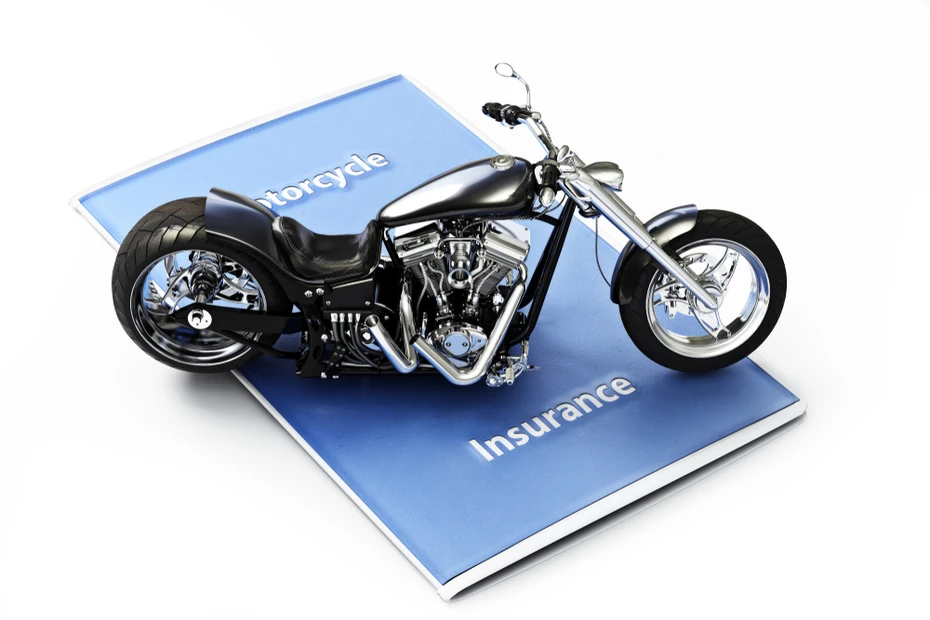Buy a Second Hand Bike Documents Needed
Paperwork Required When You Buy a Used Motorcycle
Investing in a used bike might be an excellent way to acquire a dependable form of transportation without going over budget. The used market has a wide range of possibilities to fit different needs and budgets, whether you are a student on a tight budget, a daily commuter trying to avoid traffic, or a bike fanatic chasing a certain model. But navigating this market may be challenging, particularly when it comes to making sure all the required documentation and paperwork is in order.
The emphasis on correct documentation cannot be overstated. Having the right documents is not just a bureaucratic formality but a legal necessity that ascertains the legitimacy of your purchase, ensuring that the bike is not stolen or involved in any unsettled legal disputes. Furthermore, accurate documentation guarantees that the ownership transition process from the seller to the buyer is seamless and undeniable.
Understanding the documents required for second-hand bike purchase, their significance, and how to verify them can profoundly impact your buying experience, transforming it from a potential minefield of complications into a smooth, straightforward process. This article aims to equip you with the knowledge and insight needed to make an informed decision, ensuring that your second-hand bike purchase is a delightful experience rather than a tumultuous ordeal.
Table of Contents

Identifying the Right Bike
Before diving into the paperwork, let’s take a step back and look at the very beginning of your purchasing journey: choosing the right bike. With a plethora of options available in the second-hand market, this step is crucial, forming the foundation of a successful purchase.
Usage
First and foremost, identify what you’ll primarily be using the bike for. Will it be a companion for your daily commutes, a sturdy ally for off-roading adventures, or perhaps a stylish accessory for leisurely weekend rides? Understanding your needs will significantly narrow down your choices, making the selection process more manageable.
Model and Make
Different bike models cater to various needs and preferences. Research and make a list of models that resonate with your biking aspirations. Popular and common models are generally a safer bet due to the ease of finding spare parts and their maintenance.
Price
Determine your budget beforehand. Remember, buying the bike is just the initial cost. Consider the expenses that will follow such as maintenance, insurance, and possible modifications or repairs. Make a choice that is not just affordable but also reasonable in terms of future expenses.
Condition of the Bike
Inspecting the bike’s condition is pivotal. Take someone knowledgeable about bikes with you if possible. Check for the bike's overall condition, signs of excessive wear and tear, or any peculiar noises. A test ride is a must to get a feel of the bike's performance and any possible issues.
Choosing a bike that aligns with your usage, falls within your budget, and is in satisfactory condition ensures that your journey starts on a positive note. So, invest your time in research, inspection, and contemplation, ensuring that the bike you bring home is the perfect ride for you. Armed with clarity on what you want, you’ll be in a stronger position to negotiate, evaluate, and ultimately make a confident, informed decision.
Verifying the Bike’s Condition
When you're on the quest for a second-hand bike, ensuring it's in tip-top condition should be paramount. You’re investing your hard-earned money; thus, verifying the bike’s condition, both mechanically and aesthetically, is a must to ensure you’re making a wise investment.
Essential Steps for a Thorough Check
- Mechanical Condition: Start by inspecting the bike’s engine, brakes, clutch, and gearbox. Check the condition of the tyres, wheels, and exhaust system as well. Take the bike for a test ride to ensure everything runs smoothly. Listen for any unusual noises, check the bike’s handling, and ensure that it brakes well.
- Aesthetic Condition: While a second-hand bike might not be flawless aesthetically, it should still be in a decent state. Check the paintwork, ensure there’s no significant rust or corrosion, and inspect the seat for any tears or extreme wear.
The Importance of Professional Inspection
Even if you possess a decent understanding of bikes, having a professional inspect the bike can be invaluable. Professionals bring an element of technical expertise and experience, helping unearth issues that might be easily overlooked.
A professional can conduct a comprehensive inspection, ensuring that all parts are in working condition and identifying any underlying problems that might cause trouble in the future. This inspection can provide a stronger negotiation standpoint, or it might even save you from investing in a bike that could incur significant future costs.
Having a professional inspection is a layer of assurance, a step that brings clarity and confidence to your purchase. It ensures that the bike you choose is not just visually appealing but mechanically sound, promising reliability and performance in the long run. Remember, it’s not just a bike; it’s an investment - ensure it’s a good one!
Documents to check before buying a used bike
When purchasing a second-hand bike, it’s crucial to ensure that all necessary documents are valid, updated, and transferred to your name promptly. Here’s a breakdown of the essential documents that the seller must provide:
RC (Registration Certificate)
An RC is legal proof of the ownership of the bike. Ensure that the RC is in the name of the seller and that the details within it, such as the engine number and chassis number, match the bike. Verify that there are no discrepancies or alterations in the document.
Insurance Documents
Ensure the bike has valid insurance. The insurance document will provide insights into any past accidents or claims made, helping you gauge the bike’s history better. Once purchased, the insurance policy should be transferred to your name.
PUC Certificate (Pollution Under Control)
A valid PUC certificate is essential, ensuring that the bike adheres to emission norms. Check the certificate for validity as it needs to be renewed periodically. A PUC certificate signifies that the bike is environmentally compliant and legally fit to be on the roads.
Road Tax Receipt
Ensure that the road tax has been paid for the bike. Having a road tax receipt is essential as it is a legal requirement and ensures that the bike is registered with the government authorities.
Each of these documents is a pivotal piece in the puzzle of purchasing a second-hand bike, playing a significant role in affirming the bike's legality, history, and overall integrity. Ensure that each document is scrutinised meticulously to ensure a smooth, transparent, and legally sound purchase process. Remember, it's not just about owning a bike; it’s about owning it rightfully and responsibly.
Ownership Transfer Process and Documentation
Acquiring a second-hand bike isn’t just about handing over the payment and receiving the keys. There’s a legal process to ensure the bike’s ownership is transferred to you correctly and lawfully. This process involves a series of steps and documents to be submitted primarily at the Regional Transport Office (RTO). Here’s a guide to simplify the ownership transfer process:
Steps and Documentation Required
- Sale Certificate (Form 29 & 30): The seller should provide a duly signed Form 29, and both the seller and buyer should fill and sign Form 30. These forms (also known as sale receipt for bike) act as a notice of transfer of ownership of the motor vehicle.
- NOC from the seller (Form 28): An NOC (No Objection Certificate) from the seller or the RTO (if the vehicle is from a different jurisdiction) is essential. This document ensures there are no legal liabilities or dues pending.
- Transfer Deed: A legal contract or a transfer deed between the buyer and seller, which indicates that the transaction has been made and both parties have agreed to the transfer of ownership.
- Address Proof and ID Proof: Documents like an Aadhar card, PAN card, or any other government-issued ID, substantiating the identity and address of the buyer, are necessary.
Process at the Regional Transport Office (RTO)
- Visit the RTO: The RTO where the vehicle was initially registered is where you need to submit the documents. In cases where the buyer resides in a different jurisdiction, the local RTO should also be approached for additional processes.
- Submit the Documents: Ensure that all the required documents, along with the necessary fees, are submitted to the RTO. It’s advisable to keep copies of all submitted documents for future reference.
- Verification: The RTO will verify the documents. They might also inspect the vehicle to ensure that the details match the submitted documents.
- Approval and Acknowledgment: After successful verification, the RTO will process the ownership transfer. An acknowledgement or a receipt of the transfer will be provided, which should be kept safely.
Understanding and following this process is pivotal for a smooth and hassle-free ownership transfer. Ensuring all documents are correctly filled, signed, and submitted will make the process swift and legally sound, providing you with the peace of mind to enjoy your newly acquired second-hand bike.
Verifying the Seller
Before diving into the world of second-hand bikes and immersing yourself in the excitement of acquiring a new ride, taking a moment to thoroughly verify the legitimacy of the seller is crucial. Ensuring that the seller is trustworthy and the transaction is transparent and legal can save you from potential complications and hassles down the line. Here are some tips and the significance of verifying the seller when purchasing a second-hand bike.
Tips on How to Ensure the Seller is Legitimate and Trustworthy:
- Personal Meeting: Arrange a meeting with the seller, preferably at their residence. This allows you to verify their address and offers a chance to discuss the bike’s condition and history in detail.
- Ask for Identification: Request a government-issued ID such as an Aadhar card or driving license. Ensure that the name and address on the ID match those on the vehicle’s documents.
- Verify Contact Details: Make sure the seller’s contact details, such as phone number and email, are valid. Genuine sellers won’t hesitate to provide correct and verifiable contact information.
- Inquire About the Bike’s History: Ask about the bike’s service history, any previous accidents, or major repairs. A transparent seller will be open about the bike's past, helping you make an informed decision.
- Check for Consistency: Ensure the information provided by the seller aligns with the details listed in online listings or advertisements. Inconsistencies may be a red flag.
Importance of Seller Verification to Avoid Potential Legal Hassles:
- Prevents Legal Complications: Verifying the seller’s authenticity helps prevent legal issues related to stolen bikes or those involved in illegal activities.
- Ensures a Smooth Transaction: A verified, trustworthy seller contributes to a transparent and smooth transaction process, ensuring all necessary documents are correctly handed over.
- Enhances Buyer Confidence: Knowing that the seller is genuine allows the buyer to proceed with the transaction with increased confidence and peace of mind.
- Reduces Risk of Frauds: Verification minimises the risk of falling victim to scams or fraudulent practices, safeguarding your investment.
A thorough verification of the seller not only contributes to a safe and secure purchase but also sets the foundation for a delightful biking experience, free from uncertainties and doubts.
Agreements and Forms
In the intricate process of purchasing a second-hand bike, paperwork stands as the cornerstone ensuring the transaction's legality and transparency. Understanding the nuances of various agreements and forms involved in the process is not just a bureaucratic necessity but a safeguard for both buyers and sellers against potential discrepancies and legal hassles. Here, we break down the essential agreements and forms that one needs to be well-acquainted with when embarking on the journey of purchasing a second-hand bike. Remember, these bike purchase documents are critical!
Understanding the Significance of Agreements Such as Sales Deed:
A sales deed, often referred to as a sale agreement, acts as a crucial document in the bike purchasing process. It is a legal contract that delineates the terms and conditions agreed upon by the buyer and seller. Here’s why the sales deed holds significant importance:
- Legality and Proof: The sales deed serves as a legal document that signifies the transfer of ownership from the seller to the buyer. It acts as concrete proof of the transaction.
- Detailed Information: The agreement encapsulates detailed information regarding the bike, such as its make, model, engine number, chassis number, and other essential details.
- Terms and Conditions: It spells out the specific terms and conditions of the sale, providing a clear understanding and agreement between the two parties involved.
Overview of Forms Like Form 29 & 30, Required for Notification of Transfer of Ownership:
Form 29 and Form 30 are vital RTO forms playing pivotal roles in the transfer of vehicle ownership. Here’s an overview of these forms:
- Form 29:
- This form acts as a notice of the transfer of ownership of the bike.
- It needs to be submitted to the RTO by the seller to inform about the sale and ensure that the buyer completes the necessary procedures for transfer.
- Form 30:
- This form is used to report the transfer of ownership to the RTO.
- It is a crucial form that the buyer needs to submit, confirming the receipt of the vehicle and agreeing to transfer the bike's ownership to their name.
Understanding the essential documents, such as sales deeds and requisite forms, streamlines the buying process. It ensures that the transaction sails smoothly through legal channels, providing a sense of security and assurance to both parties involved in the purchase of the second-hand bike.
Tips for a Safe and Legal Transaction
Embarking on the journey of purchasing a second-hand bike can be ridden with uncertainties. The secret to navigating this pathway with confidence lies in adhering to a set of best practices that prioritise safety and legality. This section will unveil some pivotal tips that stand as the pillars of a secure and hassle-free transaction, ensuring that your bike-buying expedition is smooth sailing.
Best Practices to Follow for a Hassle-Free Purchase:
- Research: Prior to making the purchase, invest time in conducting thorough research. Equip yourself with knowledge about the bike, its market value, and common issues, ensuring that you are making an informed decision.
- Meet in a Public Place: When arranging meetings with the seller, choose public places. Not only does this ensure safety, but it also adds a layer of formality and professionalism to the transaction.
- Test Ride: Never finalize a purchase without taking the bike for a test ride. It gives you a firsthand experience of the bike’s performance and helps in making an informed decision.
- Professional Inspection: Consider getting the bike inspected professionally. A mechanic can provide an unbiased view of the bike's condition, helping in assessing its true value.
Importance of Maintaining a Detailed Paper Trail of the Transaction:
- Document Everything: Keep a meticulous record of all documents exchanged and agreements made during the purchase process. From the initial offer to the final sale deed, ensure that everything is documented.
- Receipts: Always ask for receipts for any money exchanged. It acts as proof of the transaction and can be essential in case of any discrepancies in the future.
- Verification: Make sure that all the documents provided by the seller are verified and authentic. From the RC book to the PUC certificate, ensure that everything is in order.
- Contracts and Agreements: Ensure that all agreements, including the sale deed, are detailed and clear. They should encompass all terms and conditions agreed upon, providing a comprehensive overview of the transaction.
Treading the pathway of best practices and maintaining a meticulous paper trail acts as a safeguard against potential pitfalls in the second-hand bike purchase process. It fosters a secure environment, ensuring that the transaction unfolds seamlessly, rooted in legality and transparency. Armed with these tips, you are all set to make a purchase that is not just informed but also secure and satisfying.
Online Platforms vs Direct Purchase
Navigating the pathways of purchasing a second-hand bike presents two main roads: Online Platforms and Direct Purchases. Both avenues come with their unique landscapes of benefits and challenges. This section will voyage through the comparative landscapes of these two methods, offering insights into their impact on documentation and verification processes, and helping you make an informed choice tailored to your needs and preferences.
Online Platforms: The Digital Marketplace
Online platforms stand as a bridge connecting a vast array of sellers to potential buyers, encompassing a broad spectrum of choices, models, and price ranges.
Pros:
- Variety: Online platforms bring a multitude of options to your fingertips, allowing for a more comprehensive and convenient browsing experience.
- Trust: Purchases through reputable online platforms often come with a level of trust and reliability. They usually undertake preliminary verification checks, ensuring the bikes listed are legitimate and correctly represented.
- Documentation Assistance: Some online platforms offer support and assistance in the handling of documentation, facilitating a smoother transaction process.
Cons:
- Impersonal: Online purchases often lack the personal touch and direct interaction that comes with a traditional buying experience, which might affect decision-making.
- Dependence on Platform Policies: Transactions are bound by the terms and conditions of the platform, which might not always align with buyer’s preferences.
Direct Purchase: The Traditional Pathway
Direct purchases embody the traditional essence of buyer-seller interactions, allowing for direct negotiations and a more personalised transaction.
Pros:
- Personal Inspection: Direct purchases allow for a hands-on inspection and a more tactile understanding of the bike's condition, enabling a more informed decision.
- Direct Negotiations: They allow for direct communication and negotiation with the seller, enabling a more flexible and personalised transaction.
Cons:
- Verification Responsibilities: In a direct purchase, the onus of verification of documents and the legitimacy of the transaction falls entirely on the buyer, necessitating a more meticulous and informed approach.
- Limited Options: Direct purchases often present a more limited array of options, necessitating a more exhaustive search process.
Insights into Different Modes of Purchase Impacting Documentation and Verification:
The choice between online platforms and direct purchases also reflects in the documentation and verification processes. Online platforms often facilitate these processes to some extent, bringing in an element of ease and assurance, whereas direct purchases demand a more hands-on and diligent approach from the buyer in ensuring that all documents are verified, authentic, and duly transferred.
In conclusion, the decision hinges on personal preferences, levels of comfort, and the degree of involvement one is willing to invest in the purchase process. By weighing the pros and cons and aligning them with your purchasing priorities, you can steer your journey towards a decision that is both satisfying and secure.
Final Thoughts
Navigating through the purchase of a second-hand bike can be a challenging affair, but it’s an adventure filled with learning and satisfaction. Equipped with the right knowledge and emphasis on detailed documentation, you can certainly steer clear of potential legal hassles and uncertainties. From identifying the right bike, verifying its condition, and ensuring the seller’s legitimacy, to understanding the essential documents required, each step is a milestone towards a secure and transparent transaction.
In this digital age, the process has been somewhat simplified, and various platforms offer seamless experiences, but it is always the knowledge that triumphs. Being aware, asking the right questions, and insisting on the correct documents, can convert a daunting task into a manageable one, ensuring that the process is not just a purchase, but an investment of value.
So, ride into the sunset, feeling the wind against your face on your newly acquired bike, but ensure that each rev and each ride is backed by a robust set of documents and legal compliance. Here’s to many safe, legal, and joyful rides on your second-hand bike!
FAQs
- What is the most crucial document when buying a second-hand bike?
- The Registration Certificate (RC) is the most vital document, as it proves the bike’s legality and the seller's ownership.
- What should I verify in the RC when buying a used bike?
- Verify the engine and chassis number, make sure the details match with the bike, and ensure that there are no discrepancies or alterations.
- Is insurance transfer necessary when buying a second-hand bike?
- Yes, insurance transfer is essential to ensure that the new owner can claim insurance in case of accidents or damages.
- How do I ensure the seller is trustworthy?
- You can ensure the seller is trustworthy by verifying their identity, ensuring all documents are genuine, and the details in the documents match the actual bike’s details.
- Is it safe to buy a second-hand bike from an online platform?
- Buying from a reputable online platform can be safe, as many perform essential verifications and inspections. However, always conduct your own due diligence.
- What is the significance of the sales deed or agreement?
- The sales deed acts as a legal proof of the transaction and clearly mentions the terms and conditions, protecting the interests of both buyer and seller.
- What is the role of Form 29 & 30 in the buying process?
- Form 29 & 30 are essential for the notification of transfer of ownership, making the RTO aware of the change in the bike’s ownership.
- Can I ride the bike immediately after the purchase?
- It is advisable not to ride the bike until all necessary documents like RC, insurance, and PUC have been transferred or updated to your name.
- What are the post-purchase legal formalities to be completed?
- Post-purchase, you should transfer the RC, update the insurance, get a new PUC if necessary, and ensure all legal documents reflect the new ownership.
- What steps should be taken if there are discrepancies found in the documents?
- If discrepancies are found, it’s advisable to clear them with the seller immediately or consider not going ahead with the purchase to avoid future legal complications.














































